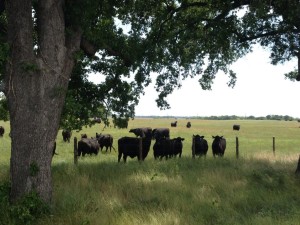Another important consideration for any landowner looking to lease land is the issue of what liability he or she may be subject to if someone is injured during the term of the lease agreement.
In Texas, the general rule is that a landowner is not liable to the tenant or to others on the land for physical harm caused by any dangerous condition that existed at the time the lessee took possession of the land.
As with most laws, however, there are several exceptions to this rule.
A landowner may be liable for injures to the tenant or another in the following circumstances:
(1) The landowner fails to disclose to the tenant a dangerous condition which involves an unreasonable risk of harm if the tenant does not know or have reason to know of the condition and the landowner does know or have reason to know of the condition and should realize the risk and expect the tenant would not discover the condition or realize the risk. This exception basically provides that if a landowner knows of or conceals a latent defect when he or she leases the property to a tenant, the landowner may still be held liable for injuries on the property.
(2) The landowner leases land for a purpose involving admission of the public who knows or should know of a condition creating an unreasonable risk of injury to the public and has reason to expect the lessee will admit people before the land is made safe and fails to exercise reasonable care to remedy the condition or otherwise protect the public. This exception refers to situations where a person leases land knowing that the public will be admitted. For example, if a landowner leases his roping arena to a group to hold a public rodeo, that situation would fall under this exception. It is important for such landowner to ensure there are no conditions creating unreasonable risk.
(3) The landowner contracts to make repairs. If a landowner agrees in the lease itself to make repairs, he or she will be held liable for failure to do so.
(4) The landowner makes negligent repairs. Both of the exceptions related to repairs essentially provide that if the landowner agrees to make repairs and fails to make them, or if a landowner negligently makes such repairs, he or she can be held liable. This makes sense from a logical standpoint, as the liability here is not based merely on owning the land, but instead on the negligent acts of the landowner in making or contracting to make repairs.
(5) The landowner retains part of the lease premises in his or her control, but allows the tenant to use the area. This issue often arises in cases dealing the common areas (such as lobbies or stairways) in apartment buildings. But it also raises an important point about agricultural leases. Generally, when a party leases land to another, the tenant has the exclusive right of possession to the property during the term of the lease and the landowner has no right to enter the property. If, however, a landowner were to reserve the right to enter the property for any reason, would that reservation subject the landowner to potential liability? In 2004, Texas Supreme Court held that the answer to this question was no. Merely retaining the right to enter a leased property, alone, is not sufficient to deem the property in the landowner’s “control” such that this exception would apply.
So what should landowners do to ensure they are not liable for injuries occurring on their land during the term of the lease?
First, landowners should ensure that they disclose any latent defects that involve an unreasonable risk of harm. If there are any conditions o the property that the landowner knows or should know could cause an unreasonable risk of harm, those conditions should be disclosed to the tenant, in writing, prior to the lease term. Landowners should be particularly careful when leasing land that will be open to the public to ensure that any unreasonable risks of harm are remedied prior to the public entering the property.
Second, if landowners offer to or do make any repairs, they must ensure that such repairs are made carefully in a reasonable manner so that no negligence claim can be successful against them.
Third, if landowners retain any part of the leased premises, they must ensure that this area is frequently inspected and kept safe.
Finally, I recommend that landowners require all tenants to carry a liability policy during the term of the lease (a copy of which should be provided to the landowner prior to the lease commencing) and to list the landowner as an “additional insured” on that policy. This essentially allows the landowner to be protected by the tenant’s policy.












